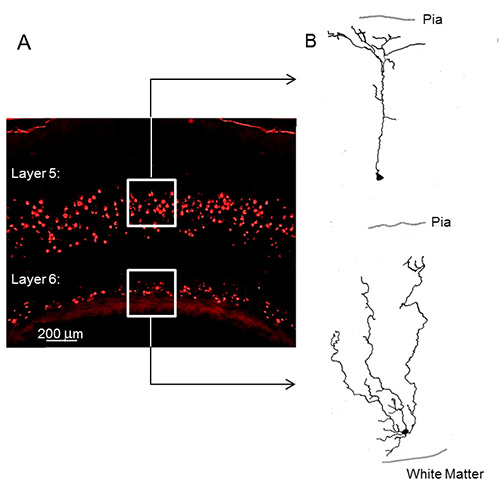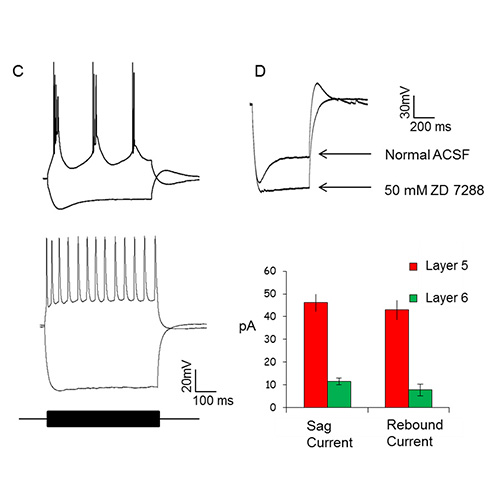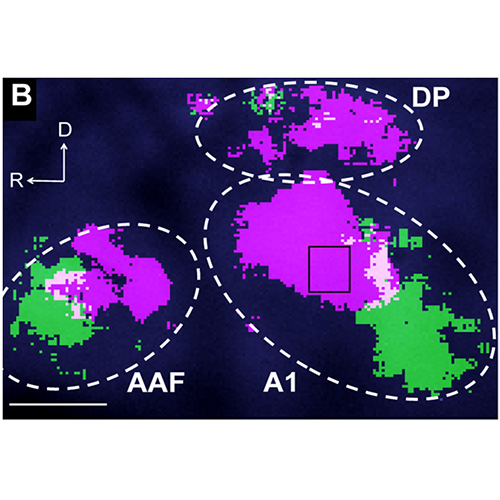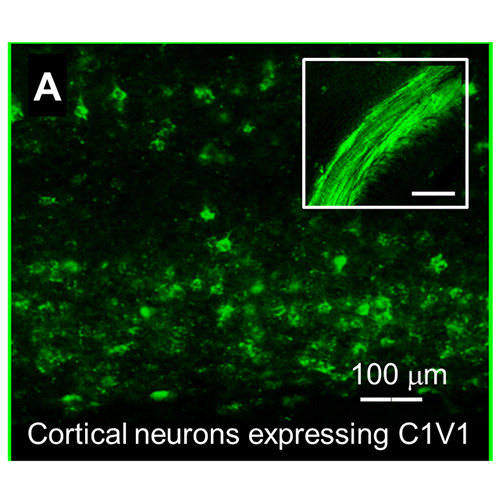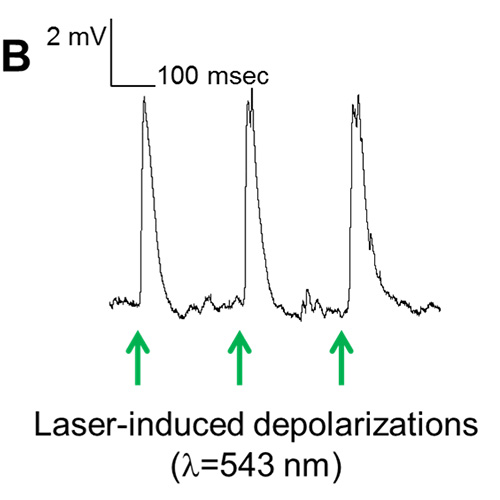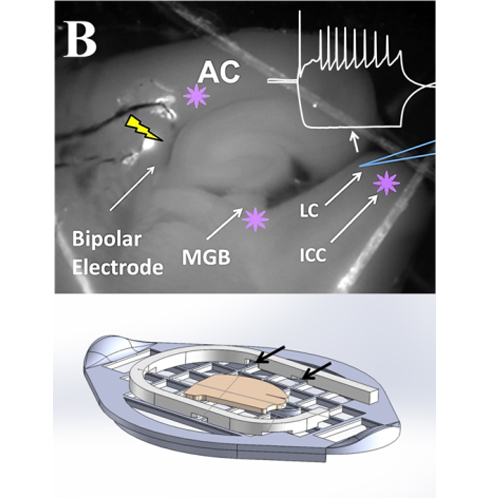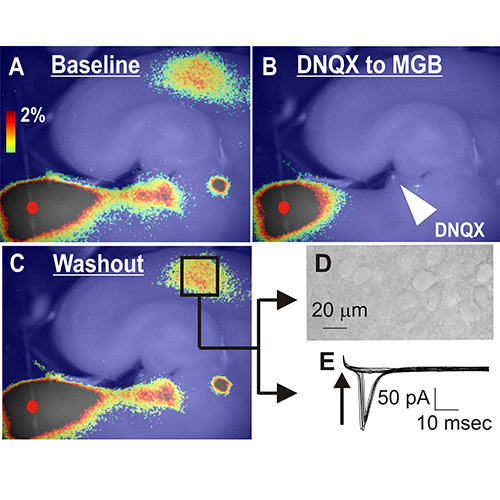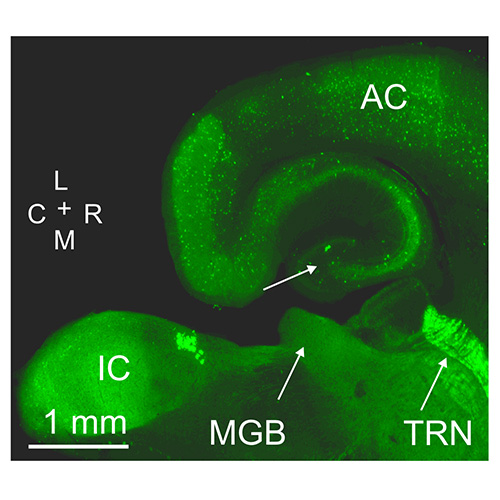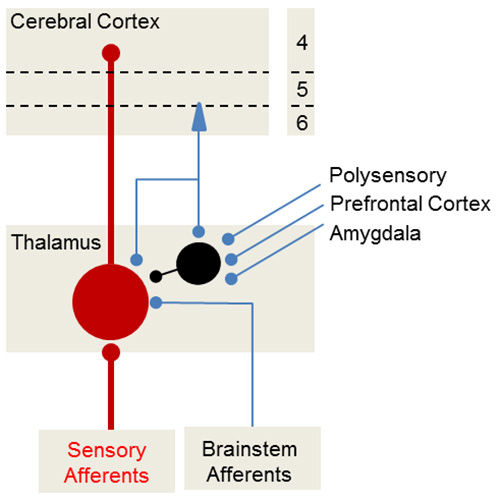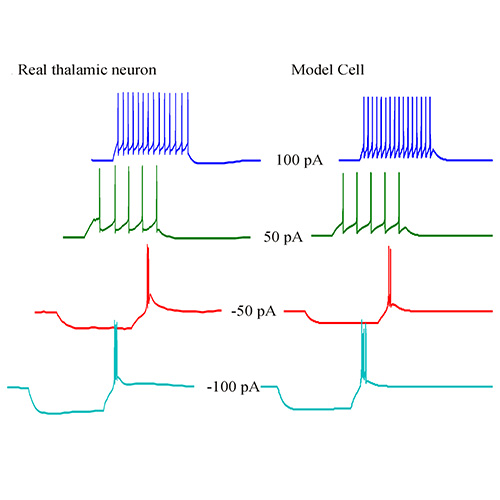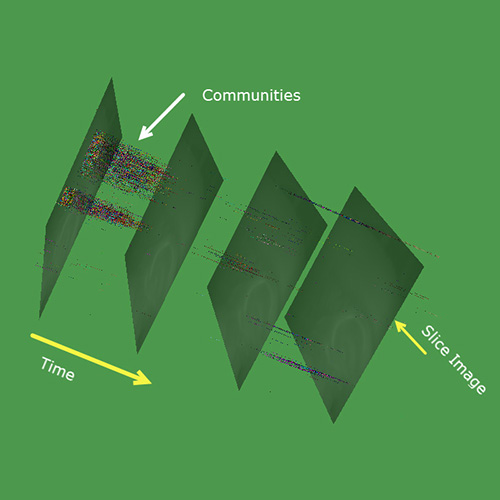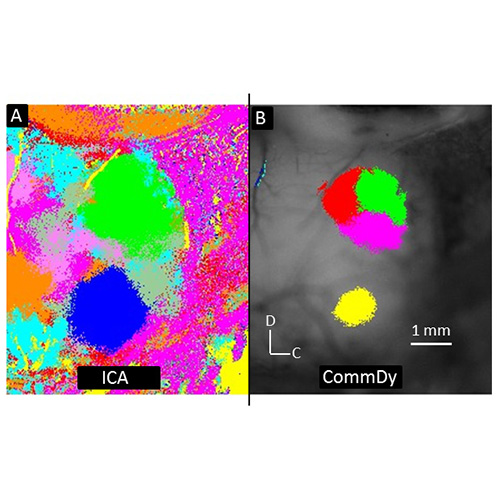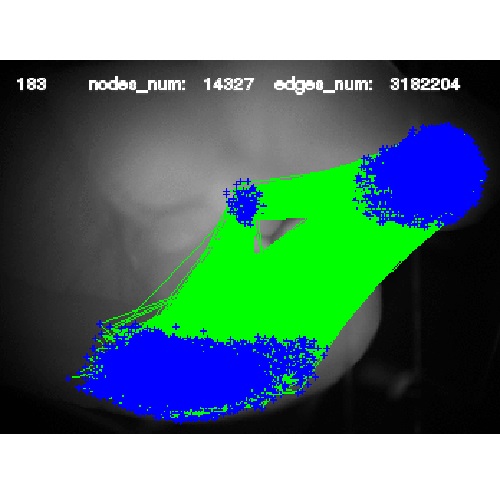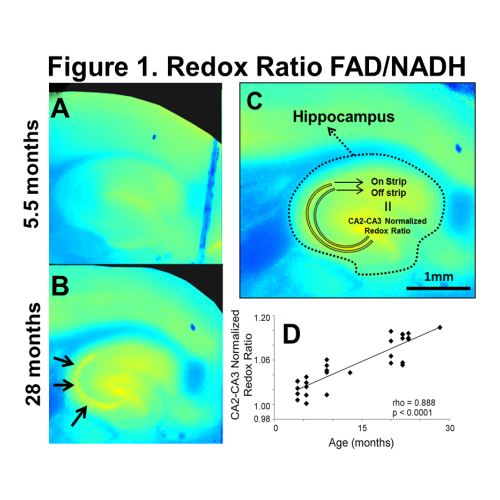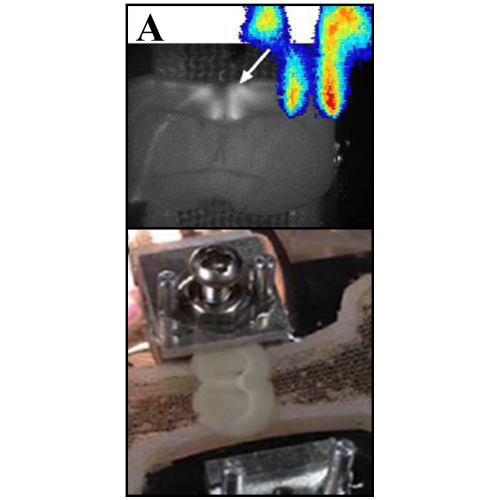Auditory Neuroscience Research
We have three main projects in the lab: 1) the study of corticocollicular systems, 2) the study of the thalamic reticular nucleus and 3) changes in the auditory system during pathological states. We take a circuit-level approach to these problems, and use a variety of techniques to address them. See below for details.
Corticocollicular System
We are interested in how the cortex modifies subcortical structures during the processing of complex sounds. As a starting point, we are focused on one of the largest descending pathways in any sensory system: the corticocollicular system. We hypothesize that this pathway has at least two functionally distinct sub-pathways: one from layer 5 and another from layer 6. We are currently engaged in a series of studies to better understand these heterogeneities and how they may be relevant for acoustic processing. These studies are done in the mouse and involve optical stimulation of the corticocollicular pathway, imaging and recording in the inferior colliculus as well as detailed neuroanatomical studies of this pathway.
Thalamic Reticular Nucleus
The thalamic reticular nucleus is a mysterious structure interposed between the thalamus and cortex. Its role in sensory processing is unknown, though many have speculated that it may be important for selective attention. We hypothesize that the thalamic reticular nucleus may either suppress, or enhance, signals passing through the thalamus, depending on the relative timing of sensory signals and input to the thalamic reticular nucleus. This hypothesis is based on the variety of voltage- and time-sensitive channels present in the thalamus and the thalamic reticular nucleus as well as the temporal properties of the thalamocortical synapse. We are currently engaged in a series of computational and physiological studies to test this hypothesis.
Pathological Changes in the Auditory System
We have adopted a circuits-based approach to investigate how several different pathological states affect the auditory system. We are particularly interested in aging and hearing loss, and whether or not some of the changes seen in the auditory system with aging are actually attributable to peripheral deafferentation. We are also examining changes in the auditory cortex in mouse models of Alzheimer's Disease. Part of this work involves a novel form of super-resolution ultrasound. This work is highly collaborative, and we have been working with Dr. Pengfei Song at Duke University.
